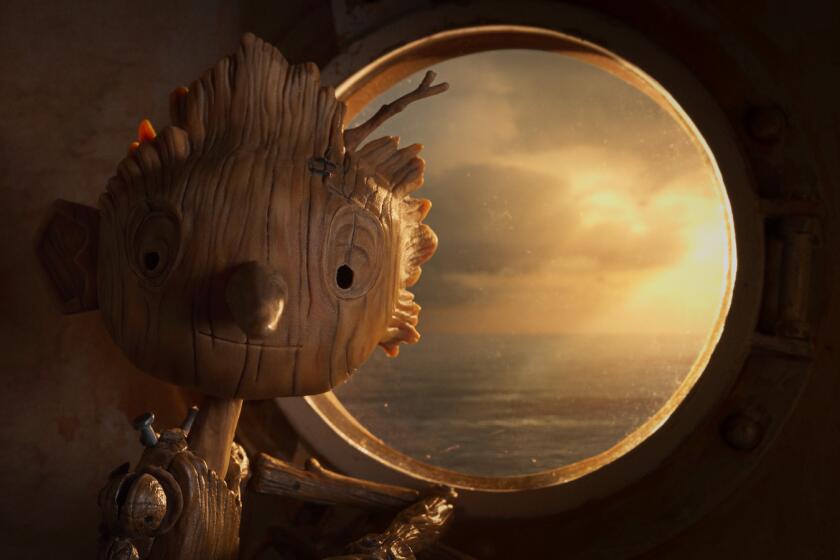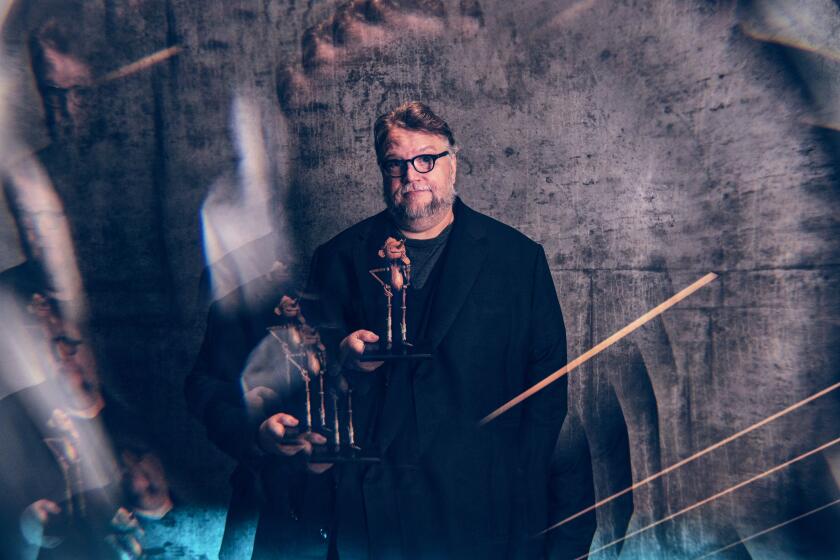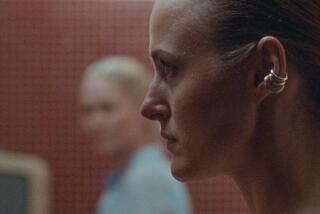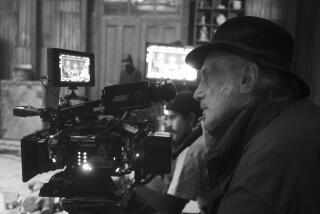Why fascist Italy was the perfect backdrop for Guillermo del Toro’s ‘Pinocchio’
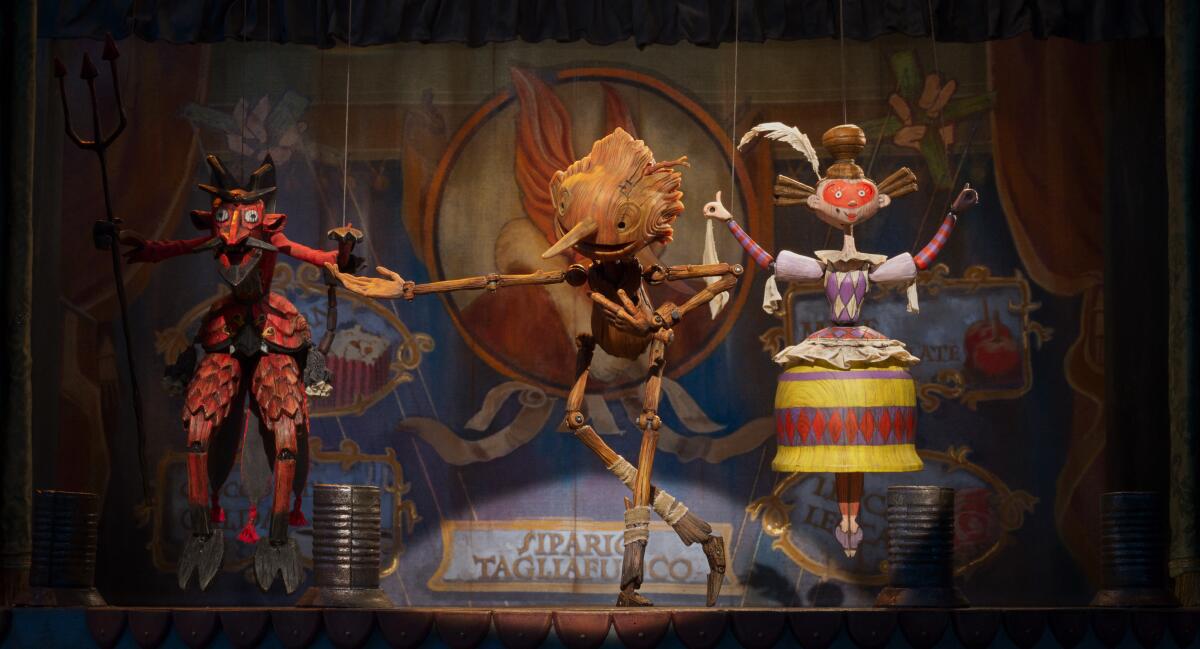
If you ask Guillermo del Toro whether his “Pinocchio” is appropriate for kids, he will tell you that “it’s not necessarily made for children, but children can watch it.”
Described as “a fable about disobedience as a virtue,” “Guillermo del Toro’s Pinocchio,” out now on Netflix, flips the script on the themes of Walt Disney’s classic adaptation of Carlo Collodi’s 19th century children’s story and sets it in fascist Italy during the rise of Benito Mussolini.
Directed by Del Toro and Mark Gustafson, the wooden puppet at the center of this tale is a grief-stricken father’s drunken creation brought to life by a wood sprite. This Pinocchio (voiced by Gregory Mann) is not necessarily concerned about being good in order to become a real boy, but is willing to try to behave in order to make Geppetto (David Bradley) proud.
What is shown over the course of the film, however, is that it’s not Pinocchio who needs to change who he is in order to be loved — it’s on Geppetto to realize and appreciate the miracle that he’s been given.
The Oscar-winner stop-motion take on ‘Pinocchio’ for Netflix is a sometimes odd, awkward thing, and at times a naggingly modern thing, but mostly a good thing.
“Pinocchio is there to transform the lives of the others,” said Del Toro during a recent video call. “It’s almost the adventures of Geppetto, this movie. Geppetto, who’s obsessed with perfection at the beginning … ends up saying, ‘Whatever you are, whoever you are, I love you just as you are.’ This was the impetus behind this [movie].”
It was this twist that appealed to Gustafson, a stop-motion veteran making his feature director debut with “Pinocchio.”
“It opened [the story] up in a very different way,” said Gustafson. “What is it about disobedience that teaches you something about yourself? What can you learn from the world by pushing back a little bit when everybody is just in lockstep and going one direction?”
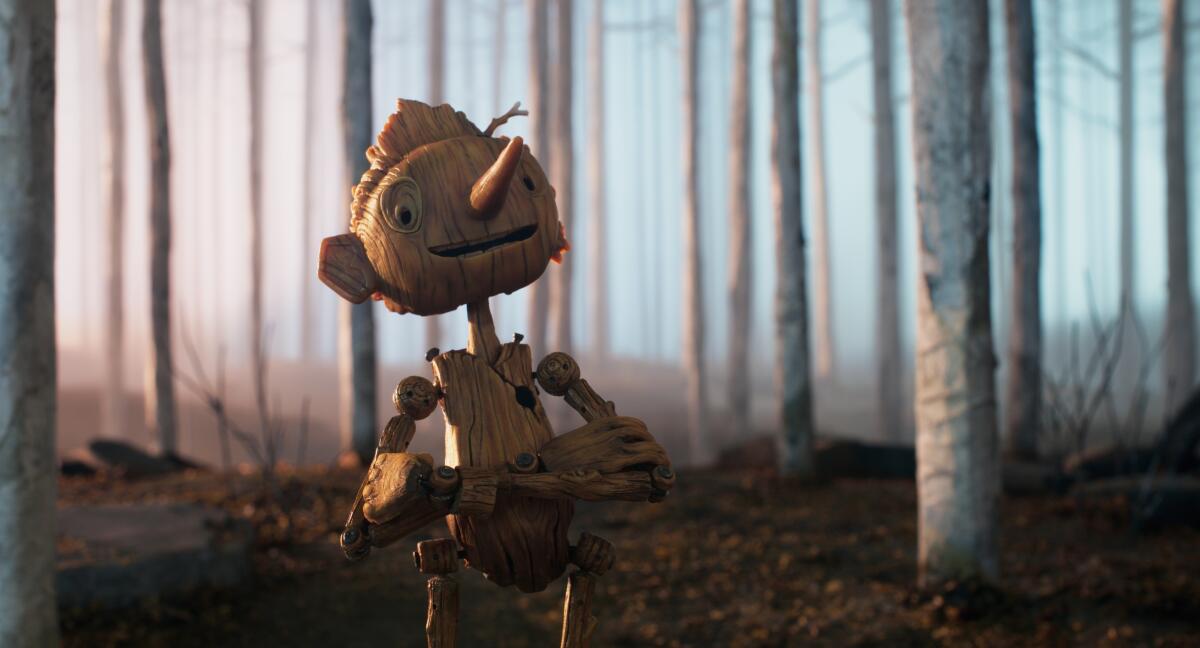
For Del Toro, who wrote the screenplay with Patrick McHale, the long-gestating “Pinocchio” is very personal. The Academy Award-winning Mexican filmmaker lists Pinocchio and Frankenstein’s creature as two characters he identified “very strongly with” growing up.
“They both represent sort of a disenfranchised son, with a father that just throws them into the world, hoping they will figure it out,” said Del Toro. “I felt that it was a close match to my child-rearing experience.”
Inspired by Gris Grimly’s illustrations for a 2002 edition of Collodi’s “Pinocchio,” Del Toro knew that animation, and specifically stop-motion, was the only possibility for his version of the tale. What better way to tell a story about a puppet in a world where everybody behaves like puppets, than with actual puppets? Especially to show that even in a world populated by puppets, where uniformity of thought is mandated by the fascist regime, Pinocchio is still an anomaly?
The Oscar-winning director tosses aside obedience and embraces defiance in the face of conformity in his retelling of the classic “Pinocchio” story.
“The conceit behind fascism is the darkest interpretation of a father figure,” said Del Toro. “The strong man in fascism is a very dark and seductive figure of power for stray souls that are looking for a sort of father figure that can dictate what you do.”
This made Mussolini’s Italy a perfect backdrop for a film that tells “rhyming stories of fathers and sons.” As Del Toro points out, Geppetto and Pinocchio are not the only father-son pair featured in the movie. There is Volpe, the flamboyant carnival leader who seduces Pinocchio into joining his stage show, and his puppeteer monkey Spazzatura. There is also Candlewick, a young boy who lives in Pinocchio’s hometown, and his father, a fascist officer who is determined to make Pinocchio follow the rules. And in all three relationships, the sons start to push back.
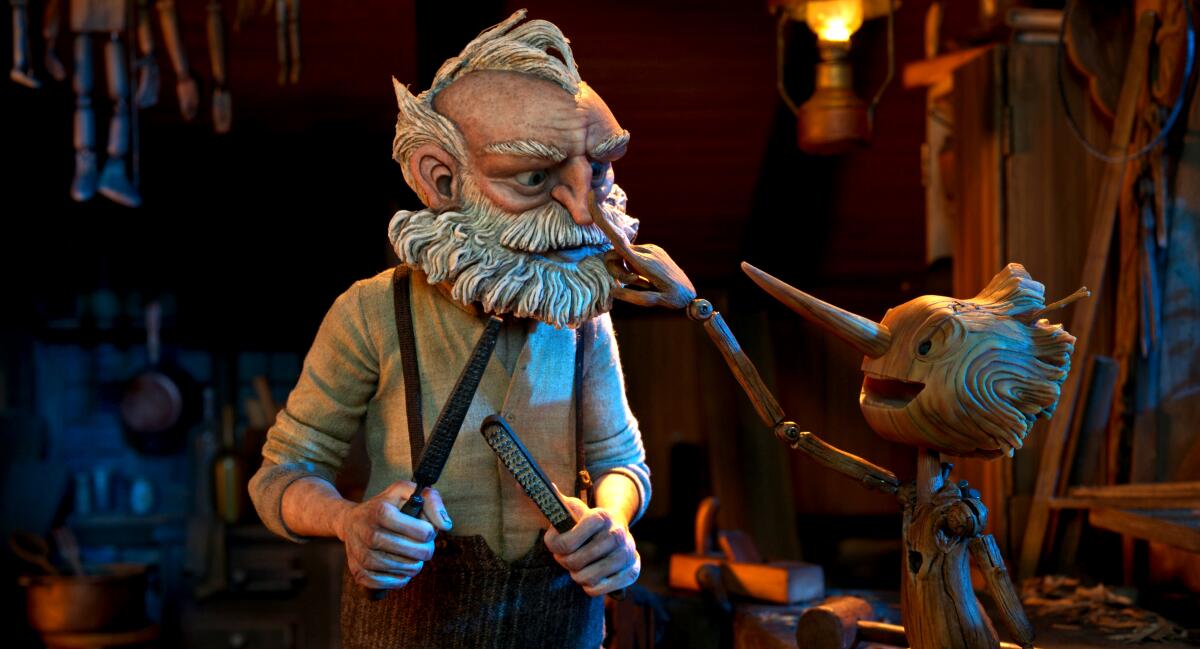
In juxtaposing a specific moment of history with a story about a child, “Pinocchio” carries on the spirit of such earlier Del Toro works as “The Devil’s Backbone” (2001) and “Pan’s Labyrinth” (2006), which used moments during the Spanish Civil War period as their backdrops. But beyond the connection between fascism and certain types of parenting, his “Pinocchio” addresses death and rebirth and the consequences of one’s decisions — themes and topics that some may consider too weighty for children’s entertainment.
“We have a lot of faith in children,” said Gustafson. “They can handle it. We decided early on, we are not going to talk down to them.”
Added Del Toro: “Kids, especially now, have an incredible sense of what’s authentic and what is not.”
Still, Gustafson said that one of the challenges in making this film was finding the balance between dark moments and light ones. That might be why a certain cricket is the repeated target of more traditional cartoon violence.
“Children can watch [“Pinocchio”] if their parents talk to them. If they’re willing to have a conversation about ideas versus ideologies, or a conversation about life and death.” Del Toro said. It’s important to have these conversations about “the bigger realities of life,” he said, “because kids don’t want easy answers. Kids want to put the real answers together.”
“Pinocchio” is just one of a number of films released this year that explores children pushing back against the expectations of their parents. From Pixar’s “Turning Red” to “Everything Everywhere All at Once” to even Netflix’s other stop-motion feature “Wendell & Wild,” these stories have all highlighted different paths toward parental acceptance.
“I think it’s a very timely subject,” said Del Toro. “I think that my generation started to not only question our fathers and our father figures, but actually questioning and understanding them more as human beings and not just figureheads. Our greatest hope, [as with] every generation after us, is that we are seen for who we are, not for who they wanted us to be.”
More to Read
Only good movies
Get the Indie Focus newsletter, Mark Olsen's weekly guide to the world of cinema.
You may occasionally receive promotional content from the Los Angeles Times.
